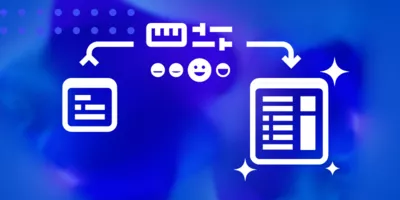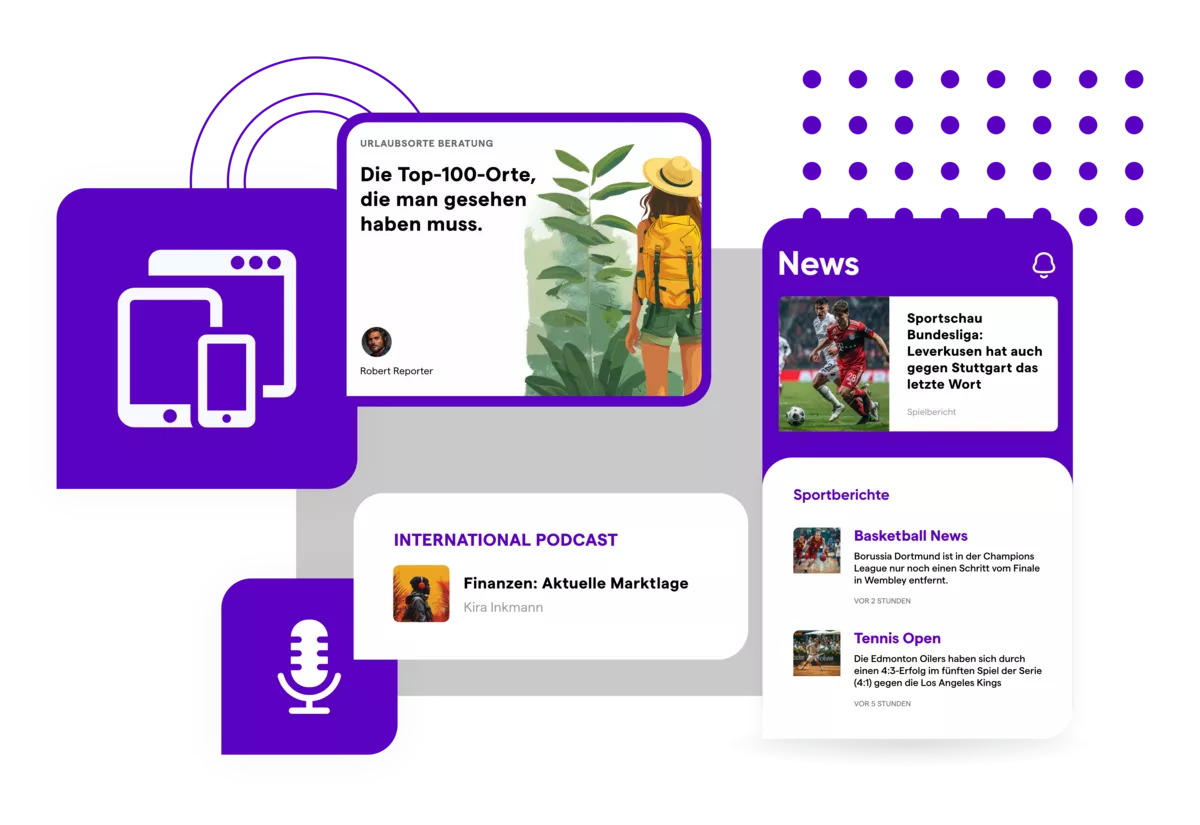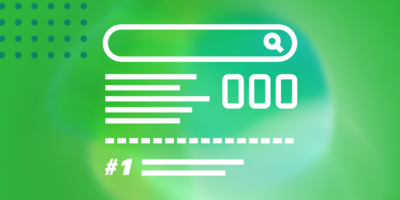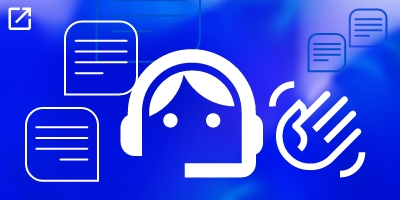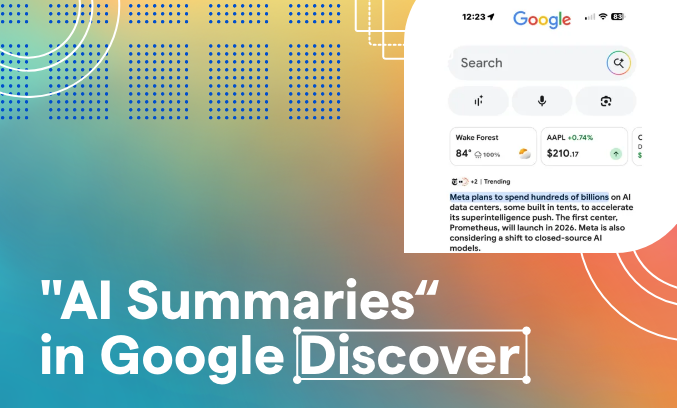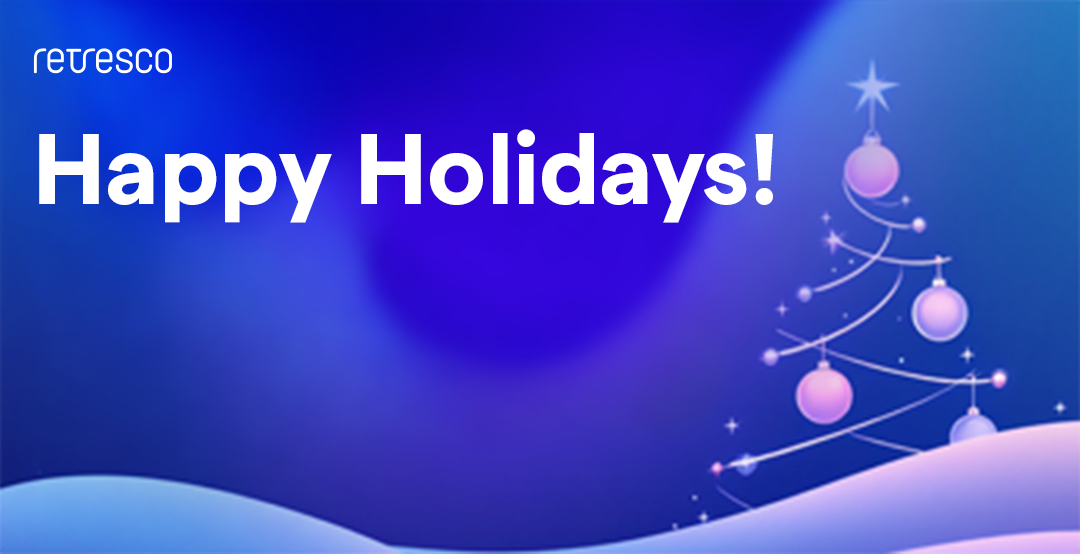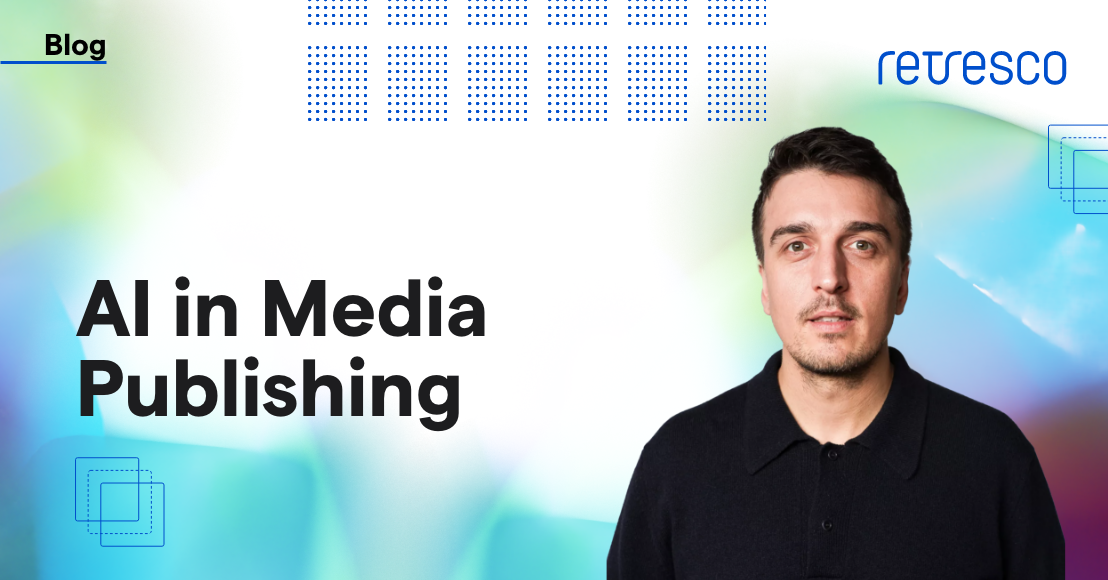- AI Solutions
- Industries
- AI Projects
- Knowledge
- About us
Blog
AI Overviews, AI Mode & Personal Context: What Google’s New Search Means for Media Companies and Publishers

Janina Abou Al Ward
Product Marketing Managerin, Retresco
Google is continuing to integrate artificial intelligence into its search results – with the clear goal of keeping information and product searches entirely within its own ecosystem.
After launching AI Overviews in the US a year ago, Google has now rolled out its AI search in the EU. The updates presented at the I/O developer conference show: Google is rethinking search – and changing the rules of the game for reach and visibility of content.
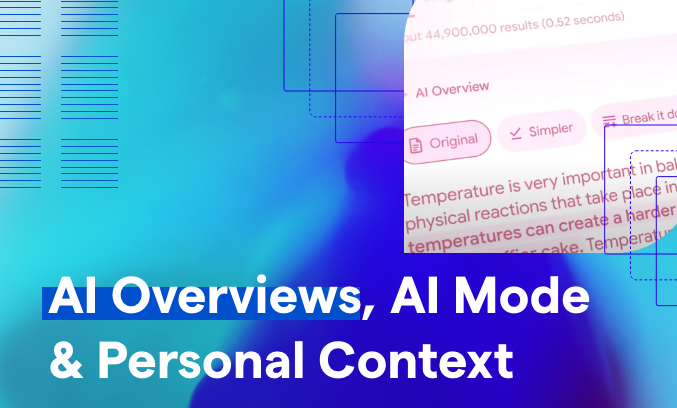
AI Overviews: From search results to answer engine
AI Overviews summarise relevant information directly at the top of the Google results page – based on various sources. For users, this means quick, easy-to-digest answers without clicking on a single news or publisher website. For media companies and publishers, however, it means reduced visibility in search results: while their content is still used and processed, it often no longer leads directly to clicks on their own website.
In future, Google will generate such content using Gemini 2.5, the latest version of its AI model – promising a leap in quality for text generation and source processing (until now, Gemini 2.0 was used for search queries).
With AI Overviews, AI Mode & Personal Context, Google aims to fully contain search within its own ecosystem
AI Mode: Chat search goes mainstream
With AI Mode, Google is introducing a new search interaction model – initially in the US, but likely to go global. AI Mode is a chat-based search format that lets users ask questions conversationally, like with ChatGPT or Perplexity. Answers are no longer shown as traditional search results but instead as cohesive, dialogue-based responses – also generated by Gemini. AI Mode signals a paradigm shift: traditional search result lists may soon be a thing of the past.
Currently, AI Mode doesn’t replace traditional search but appears as a separate tab alongside “News”, “Images”, or “Videos”. Still, the direction is clear: Google’s search offering is undergoing a fundamental transformation – and with it, the mechanisms by which content is found, referenced and displayed.
Personal Context: Google goes all-in on personalisation
The new “Personal Context” feature, initially exclusive to AI Mode, allows Google to tailor search results more closely to individual users – based on search behaviour, calendar entries, location data or information from other Google services like Gmail. Traditional, largely generic web search becomes an AI-based assistant that actively incorporates personal preferences, interests and contexts into the response generation – another major paradigm shift.
What does this mean for media companies and publishers?
For publishers, Google’s new AI-driven search formats pose a dual challenge:
- Loss of visibility and clicks: While content is still processed, it’s often not clearly attributed or linked – especially for simple, informational queries.
- Rising importance of semantic quality and entity recognition: Only structured, highly relevant information is likely to be included by Google.
In other words: AI-optimised content production becomes a prerequisite for visibility. Content must be prepared and presented not only for humans but also for AI systems like Google Gemini.
Google is building its own ecosystem – new content strategies are needed
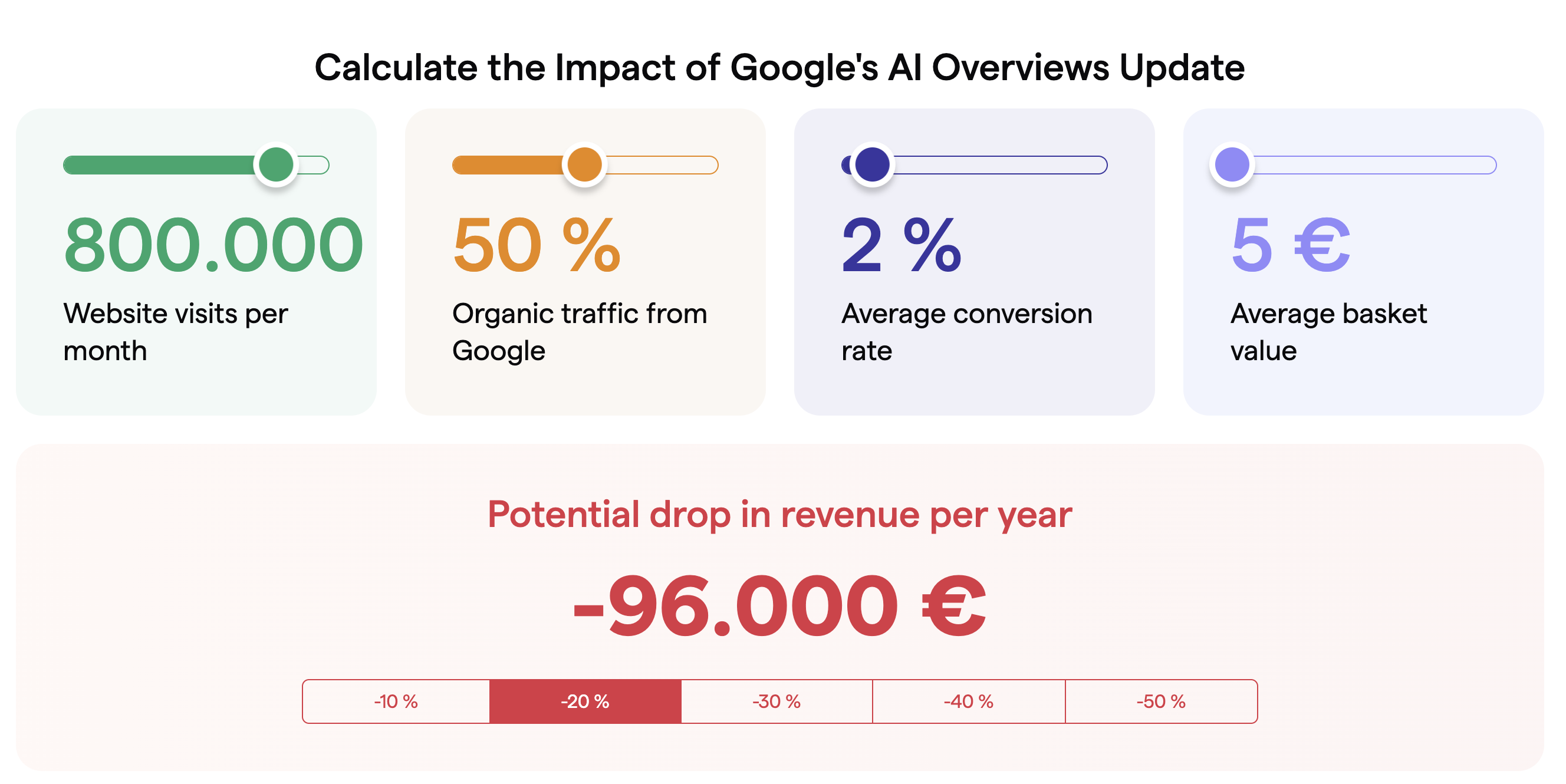
Google AI Overviews: Calculate the revenue impact of reduced website traffic with our interactive calculator
Google is evolving from a search engine to an AI-powered answer engine. Traditional SEO logic is becoming less effective. Future visibility will depend less on rankings in result lists and more on relevance in AI-generated responses.
To stay visible in search results, publishers must understand how AI systems select and evaluate content – and adjust their content strategies accordingly.
The new publisher paradigm: Visibility without clicks
According to Google, AI Overviews now reach 1.5 billion monthly users. With the enhanced AI Overviews, Google has entered a new search era – and the effects are already being felt. What may look like a technical upgrade is, in reality, a fundamental shift in informational search: instead of result lists, users are increasingly shown answer boxes filled with AI-generated content.
The result: visibility without clicks.
Initial analyses show a significant drop in organic traffic. International data reports losses of up to 35% – while searches showing searches with AI Overviews have increased by 49%.
A brave new Google world: Top rankings without reach
The central challenge for publishers: even a No. 1 organic ranking delivers significantly less reach. AI Overviews dominate the visible page area – often appearing above ads, snippets, and traditional results. On mobile, where users must scroll through lengthy AI answers to reach organic listings, established publishers are losing substantial visibility.
Moreover, early data suggests that 89% of content in AI Overviews does not come from the top 100 results. Keyword rankings are losing importance. To be found, content must appear within the AI answers themselves – as source, quote, or semantically usable reference.
Mentions – the new currency of visibility?
Publishers will have to accept declining click-through rates. At the same time, mentions and citations in AI-generated Google answers are becoming far more valuable. This calls for a strategic shift: content must be not only discoverable, but also machine-readable, contextually structured and recognisable as a trustworthy source. AI Overviews shift the logic from “ranking” to “reference”. Classic visibility – in the form of a clickable link – will become rare. But mentions in Overviews could soon become a new form of editorial reach.
Fewer clicks, less reach, reduced traffic
The current Google updates are designed to let users consume information directly on the search results page – without clicking through to news or publisher sites. This undermines traditional reach-based models used by media outlets.
The key questions are:
How heavily are your own pages affected by AI Overviews? Which keywords are impacted, and to what extent?
The greater the share of searches showing AI answers, the higher the risk of losing valuable organic traffic. Google argues that publishers can optimise their content for AI Overviews to regain visibility – but in practice, this may amount to little more than PR-friendly lip service to soften the blow of Google’s evolving search logic.
Personal Context: What it means for media companies and publishers
The increasing personalisation of Google search also has direct implications for editorial content visibility. Visibility will become even more fragmented: results will no longer appear uniformly for all users, but individually tailored based on context and relevance. This makes reach harder to predict and undermines linear SEO strategies, since there is no longer a single result list – but countless personalised response paths.
Making content visible when no one clicks anymore
Google’s latest moves show that traditional SEO measures are no longer enough to get your content found. Media outlets must rethink their strategies and align with the requirements of AI-powered content discovery. This includes:
- Optimising content for AI: Structured data, clear headlines, concise statements – content must be machine-readable and semantically rich.
- Strengthening your media brand: AI systems prefer trustworthy, recognisable sources. Strong positioning, high-quality content and consistent presence increase your chances of appearing in personalised answers.
- Segmenting content: Tailoring content for different target groups and use cases is time-consuming – but pays off. Persona-driven topic clusters and use-case-optimised formats boost relevance and visibility. First-party data and predictive analytics provide the basis for contextual targeting.
- Doubling down on niche SEO: Generic content is losing ground. Specialised, intent-focused landing pages with clear informational goals are more likely to be found and cited.
- Building cross-channel offerings: Podcasts, newsletters, communities or social media reduce dependency on Google – and strengthen your AI signal profile.
- Sharpening your conversion focus: With fewer clicks, each one must count. Conversion optimisation, tracking user and content segments, and clear user guidance will become even more important.
- Making use of Google Discover: Information and product feeds are gaining relevance – especially since full content feeds are now preferred over simple URL lists.
“nosnippet” or not? A strategic dilemma
Technically, Google offers publishers another option: the nosnippet attribute. This excludes your content from AI Overviews and similar formats. But here’s the dilemma: block crawling, and you vanish; allow it, and you get fewer clicks. Publishers are forced to choose between reduced traffic and full control with invisibility. In either case, new strategies are essential to remain relevant – beyond the traditional click-based logic.
Google 2.0: Publishers left in the dark
With the launch of AI Overviews and related features, Google has initiated a fundamental shift in its search and ad ecosystem. This year’s Google I/O made the direction clear: fewer clicks to external sites, more control over the entire user journey. At the same time, Google is doubling down on usage data to radically personalise results – first in AI Mode, and eventually beyond.
The goal is obvious: Google wants to own the full customer journey – from the initial query to final conversion – all within its ecosystem. Information and product searches are no longer meant to happen outside the Google universe.
For publishers, this means: declining reach, less traffic, and growing dependence on a platform that is becoming an increasingly closed black box.
At Retresco, we help publishers create, structure and distribute AI-ready content – scalable, structured, and visible. Those who act now and invest in their own offerings will secure visibility and revenue in the future.
Got questions, feedback, or interest? Let’s talk – I’d love to hear from you!
